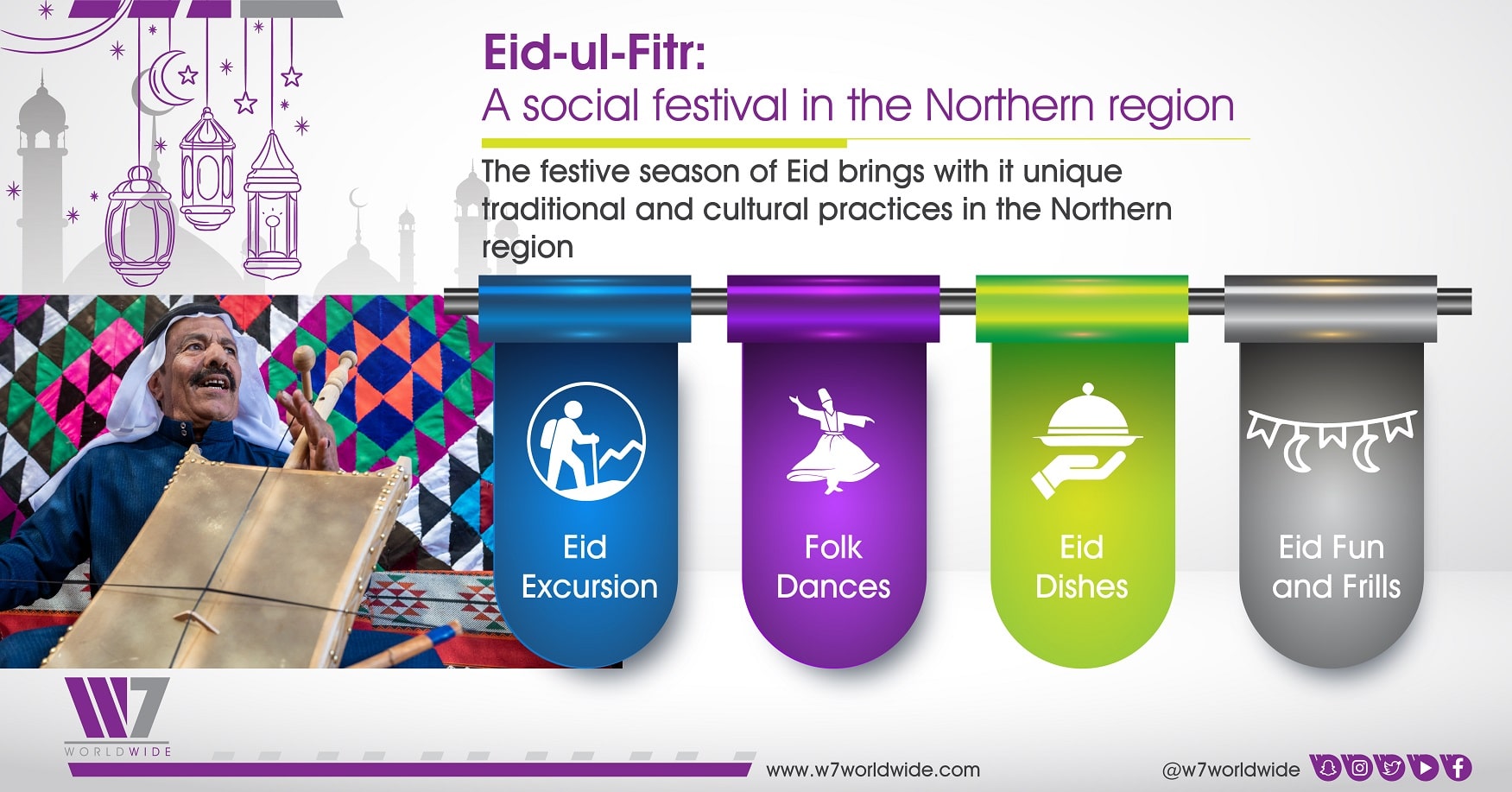Happy Eid: Welcoming the days of feasting after a month of fasting
A very Happy Eid to all our readers! We, at W7Worldwide, wish you and your families a blessed Eid and holiday season, filled with love, laughter, happiness, kindness, health, and safety!
This year in our blog series, we covered the northern region of Saudi Arabia, as part of our campaign to bring forth the diverse traditional cultures and beauty of the Kingdom during Ramadan and Eid Al-Fitr.
The festive season of Eid brings with it unique traditional and cultural practices across the country. The northern region too has its own practices that make this joyous occasion even more special. Some of these include:
Fun and Frills
The homes are newly adorned with Eid decorations to welcome guests in a festive ambiance. The breakfast table is laid out with a variety of popular dishes, including sweets and nuts, and most importantly, the Saudi qahwa (coffee). People host relatives, friends, and neighbors on Eid, and once the blessed days of Eid are over, they follow it up with fun shows, ethnic dances, and entertainment programs. Women decorate their hands with henna and distribute Eid gift boxes among the children, containing clothes, dates, hummus, sweets, kleija, and pulses.
Folk Dances
There are various kinds of traditional dances that take place on the occasion of festivals in the northern region. Some of these are:
Daha: It is a war dance that aims to spread terror in the hearts of the enemies. It is also an expression of the celebration of victory after the battle. The dance comprises chants and sounds that are very similar to the roar of lions or camels. Today, it is performed on festive occasions and holidays, attracting both the young and old to participate in the performance collectively. Men line up in one or two rows, letting the poet sing his poem, and the two rows repeat alternately after him.
Northern Dabke: Known as dabka, it is a famous folk dance, also popular in Palestine, Jordan and Lebanon. It is often performed during festive occasions, such as weddings and religious festivals. Dabke is derived from the Levantine Arabic word “dabaka,” which can be roughly translated to “stamping of the feet.”
The dance is characterized by people stamping their feet rhythmically in lines or circles. The dancers’ arms will often be interlocked with one another and they will usually sing or chant along with the dabke music in the background.
It is a folk dance, in which the dance troupe harmonizes with the playing of rhythms by beating its legs on the ground, which supports the sounds of the accompanying rhythms. These events are usually accompanied by hybrid singing, Samaritan folklore handed down from generation to generation, and horse racing.
Eid Dishes
Saudi Arabia’s food trends largely reflect its society’s evolving lifestyles. While the local cuisine has undergone slight variations, its authenticity has been preserved by the locals. This is much more evident during Ramadan and Eid, when visiting tourists can experience an array of local flavors served with love and respect.
During Eid, families gather together in one place to meet and greet each other, especially the elderly. They bond over food and laughter, with dishes such as mahmous, mansaf, harees, mataziz, hamees, jareesh, maqtouta, qursan, margook, fattah, and maamoul keeping them fully satiated.
Eid Excursion
A short excursion is planned with friends and family during the festival time when offices and schools are off. Children especially look forward to these trips, which may comprise a visit to a picturesque outdoor destination, such as plains, valleys and sand dunes.

